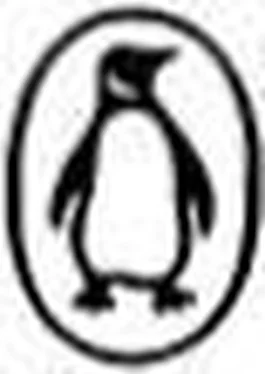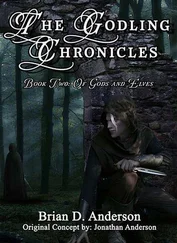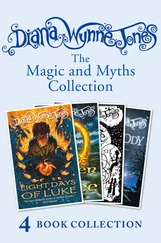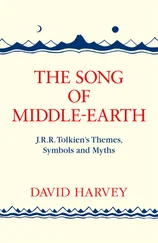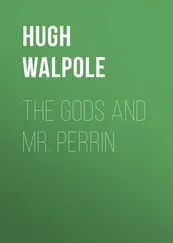Davidson, H. - Gods and Myths of Northern Europe
Здесь есть возможность читать онлайн «Davidson, H. - Gods and Myths of Northern Europe» весь текст электронной книги совершенно бесплатно (целиком полную версию без сокращений). В некоторых случаях можно слушать аудио, скачать через торрент в формате fb2 и присутствует краткое содержание. Жанр: Старинная литература, на английском языке. Описание произведения, (предисловие) а так же отзывы посетителей доступны на портале библиотеки ЛибКат.
- Название:Gods and Myths of Northern Europe
- Автор:
- Жанр:
- Год:неизвестен
- ISBN:нет данных
- Рейтинг книги:5 / 5. Голосов: 1
-
Избранное:Добавить в избранное
- Отзывы:
-
Ваша оценка:
- 100
- 1
- 2
- 3
- 4
- 5
Gods and Myths of Northern Europe: краткое содержание, описание и аннотация
Предлагаем к чтению аннотацию, описание, краткое содержание или предисловие (зависит от того, что написал сам автор книги «Gods and Myths of Northern Europe»). Если вы не нашли необходимую информацию о книге — напишите в комментариях, мы постараемся отыскать её.
Gods and Myths of Northern Europe — читать онлайн бесплатно полную книгу (весь текст) целиком
Ниже представлен текст книги, разбитый по страницам. Система сохранения места последней прочитанной страницы, позволяет с удобством читать онлайн бесплатно книгу «Gods and Myths of Northern Europe», без необходимости каждый раз заново искать на чём Вы остановились. Поставьте закладку, и сможете в любой момент перейти на страницу, на которой закончили чтение.
Интервал:
Закладка:
Before this finally happened, however, there was a period of a thousand years in which the old gods were worshipped in the north. This is a long time, and the forms and practices of the heathen religion must have changed greatly during the course of it. We know that there was considerable variety among the religions of the different German tribes, who had no universal faith or church. Moreover there were outside influences to affect the heathen peoples: first from the pagan Mediterranean area, secondly from the East, and thirdly from the Christian Church We must avoid the common error of supposing that the myths which we possess grew out of a fixed and permanent heathen faith possessed by the whole Germanic world.
The heathens themselves left few written records. Such restless adventurers were not the kind of people to sit down and inscribe stories and poems on parchment, and indeed they did not know how to do so. A few wise men could carve runic letters on wood or stone or metal, but this process was not suitable for long and detailed records. The art of writing with a pen only reached the north with the Christian priests. Consequently, our written records from heathen times come either from outsiders, writing Greek or Latin, or from monks in Christian monasteries. One most valuable commentator from early times is the Roman historian Tacitus, living at the end of the first century after Christ, since he was deeply interested in the Germanic way of life, and believed Rome should learn from it. Our difficulty, however, is to decide how far he and many far less gifted recorders of heathen beliefs and practices can be relied upon for accurate first-hand reporting. As far as the poems, stories, spells, riddles, and chronicles written down in the monasteries are concerned, they may have been recorded as much as two or three hundred years after the conversion, and this allows the possibility of prejudice, misinterpretation, or deliberate editing when non-Christian beliefs are being dealt with.
Fortunately it seems that many monks rejoiced in the old stories and poems, and wished to preserve them. England has a great treasure in the form of the complete epic poem, Beowulf , the tale of the exploits of a Scandinavian hero of heathen times. It was written down about A.D. 1000, long after the Anglo-Saxons were converted, so it is not free from Christian influence, but it contains information about the heroic past and the way of life in northern Europe before Christianity was established there. Fragments of other heroic poems remain, enough to remind us that our losses have been great. The prose sagas from Iceland have already been mentioned. They were written down in monasteries, and are stories of the adventures and relationships of the early settlers there at the time when most of them were heathen. The sagas are not free from Christian and romantic influences, and the modern tendency is to regard them as brilliant historical novels rather than wholly reliable records of the heathen past, but the memory of heathen customs preserved in them is of considerable value. The sagas of the kings of Norway have recorded more information for us about pre-Christian traditions and the struggles of the early Christian kings to overthrow heathenism. Also from Iceland comes a collection of mythological poems about the heathen gods, which were written down about the thirteenth century, but must contain earlier material. They are unequal in quality, but contain some poetry of great imaginative power. Without these poems, our ideas about heathen religion would be very different, and it is a sobering thought that they are nearly all from one small vellum book of forty-five leaves, the Codex Regius , rescued by chance from an Icelandic farmhouse in the seventeenth century. One can only speculate how many other priceless books of this kind have vanished without trace.
The fact must be faced at the outset then that our written sources on the subject of northern heathenism are comparatively late, fragmentary, and of uncertain reliability. In Eliade’s book, Patterns in Comparative Religion , 1he asks us to imagine a Buddhist scholar setting out to explore Christianity. He does so
with only a few fragments of the Gospels, a Catholic breviary, various ornaments (Byzantine icons, Baroque statues of the saints, the vestments, perhaps, of an Orthodox priest), but able, on the other hand, to study the religious life of some European village.
This is a salutary exercise, because the evidence connected with the religion of the heathen north is something of this kind, except that we are at a severe disadvantage in that the life of the village now only exists in ancient records of varying reliability. In such a case as Eliade imagines, the Buddhist would no doubt be struck by the wide divergence between the customs of the village and the material in the Gospels and breviary. Should he conclude that the naïve superstitions and inarticulate responses of the villagers were nearer to the essentials of the Christian religion than, say, the opening chapters of St John’s Gospel, we know that he would be wrong. It is not that either is ‘truer’ Christianity than the other, but that the Christian faith exists at many different levels in different societies and in the minds of different men. We fall all too often into the same error when we approach one of the religions of the past. We must be prepared for the simple folk-beliefs of the less sophisticated to be found beside complex symbolism. The important thing is not to allow the crudity of the folk-beliefs to blind us to the depth and importance of the symbolism. Crude and childish ideas about the heathen gods will certainly be found in the myths, either because these satisfied ignorant folk, or because the use of symbols has been misunderstood by the recorder. But it does not follow that all who worshipped these gods were crude and childish in their religious outlook. Indeed the contention put forward in this book is that this was very far from the case.
3. New Light on the Myths
It should by now be evident that the study of the northern myths is neither simple nor straightforward. There are, however, more cheering factors to be taken into account. It would be fair to say that the student of early mythology today has a better chance of understanding it than at any previous period since interest in the northern gods was first aroused in the eighteenth century. We have new evidence to draw on, and new disciplines in which to work.
One of the most important of these is archaeology, in which development has been rapid during the last thirty years. We are unlikely to discover fresh written records from the heathen period, but the emergence of a new ship-burial or heathen temple is something which can happen at any time. Such discoveries can show us the way in which the people who worshipped the gods lived, the nature of their religious ceremonial, and how they treated their dead. Funeral rites in particular can tell us much about the use of religious symbolism, and what the worship of the gods meant to those who believed in them. A major archaeological discovery, like that of the Anglo-Saxon ship-burial at Sutton Hoo, may cause us to revise many of our former ideas about religious practice and symbolism. Sacred places like Jelling in Denmark and Old Uppsala in Sweden have been excavated not long ago; as recently as 1962 the site of the first little Christian church in Greenland, set up by the wife of Eric the Red, was discovered. Indeed archaeological evidence increases to an almost bewildering extent: from England alone the excavation of new Anglo-Saxon cemeteries of the pagan period and revaluation of records of earlier excavations are bringing to light fresh facts every year.
There is no doubt that all our resources are needed if we are to read archaeological evidence aright. We want knowledge of written records, the history of religions, and the use of symbolism, as well as the use of all available scientific methods for the preservation of finds. The effort is infinitely worth making, for a temple site or a royal grave, wisely excavated and recorded, can be like a voice speaking directly to us from the past.
Читать дальшеИнтервал:
Закладка:
Похожие книги на «Gods and Myths of Northern Europe»
Представляем Вашему вниманию похожие книги на «Gods and Myths of Northern Europe» списком для выбора. Мы отобрали схожую по названию и смыслу литературу в надежде предоставить читателям больше вариантов отыскать новые, интересные, ещё непрочитанные произведения.
Обсуждение, отзывы о книге «Gods and Myths of Northern Europe» и просто собственные мнения читателей. Оставьте ваши комментарии, напишите, что Вы думаете о произведении, его смысле или главных героях. Укажите что конкретно понравилось, а что нет, и почему Вы так считаете.
